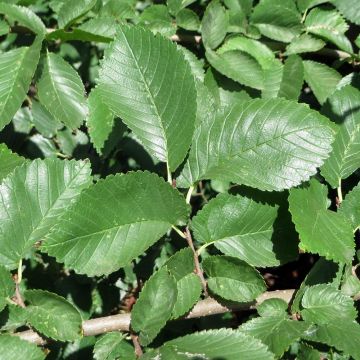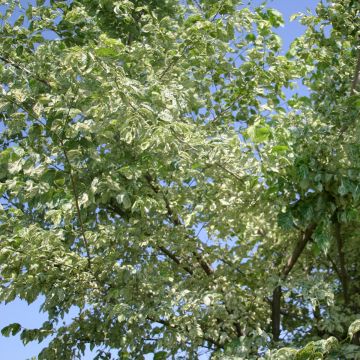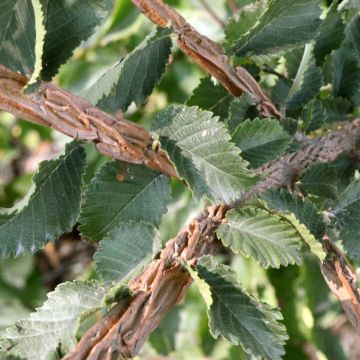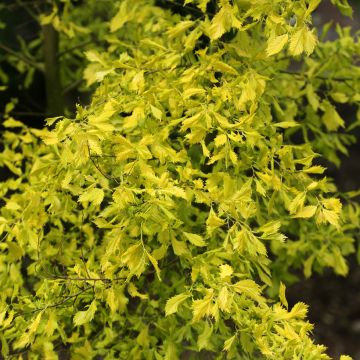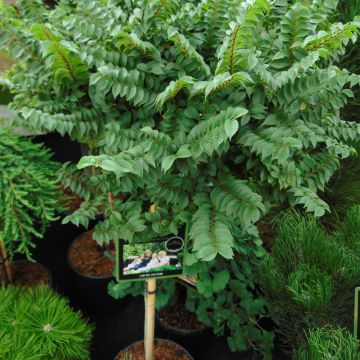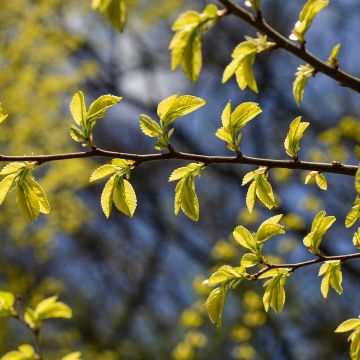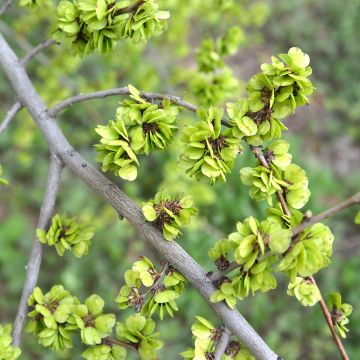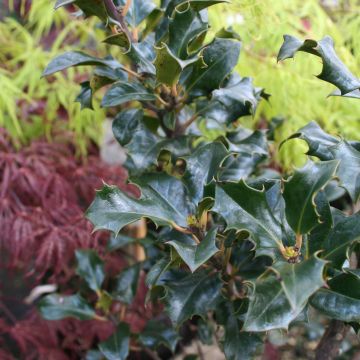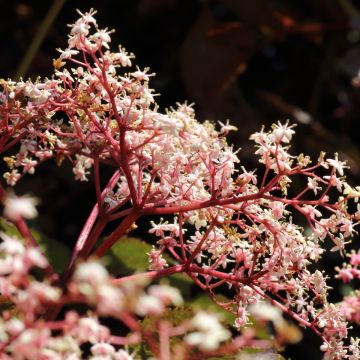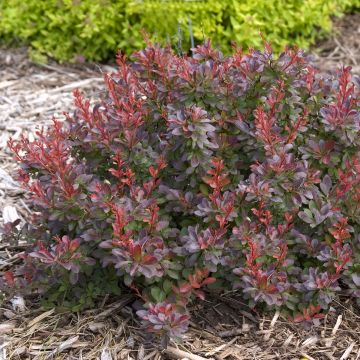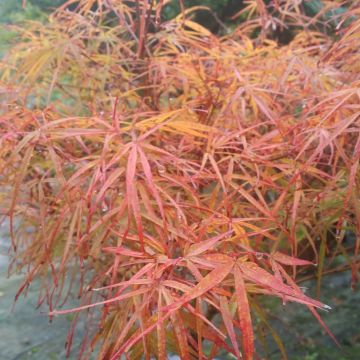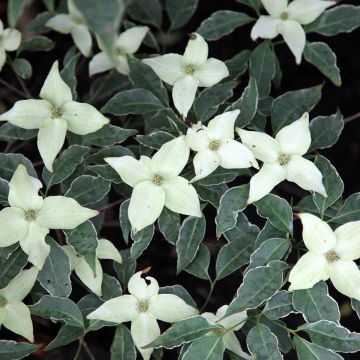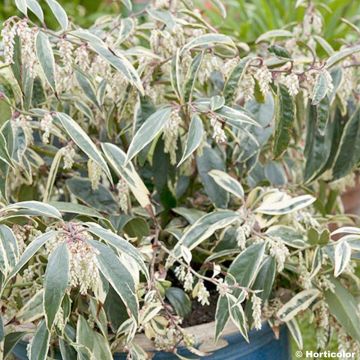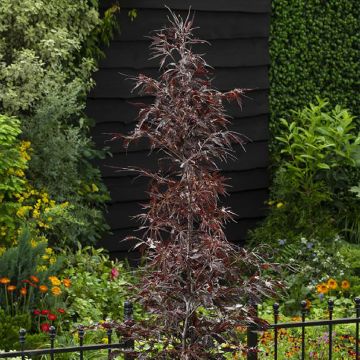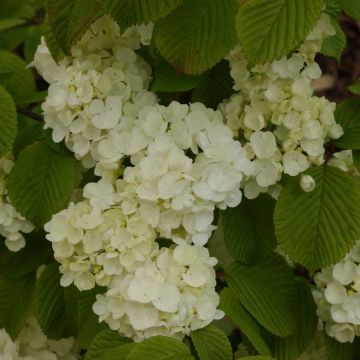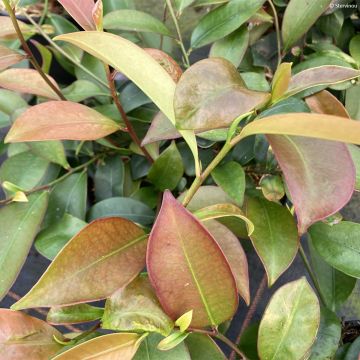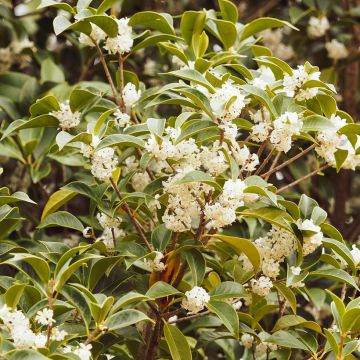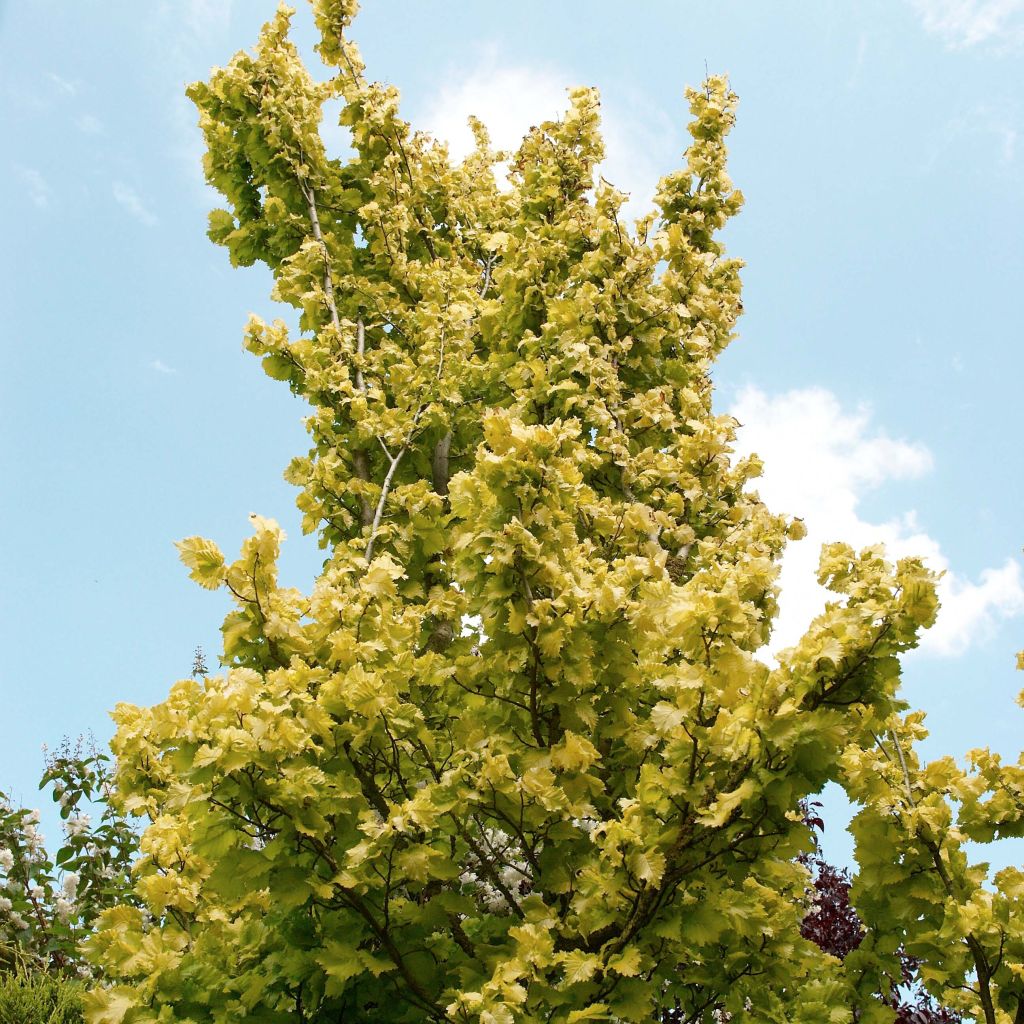

Ulmus x hollandica Wredei - Elm
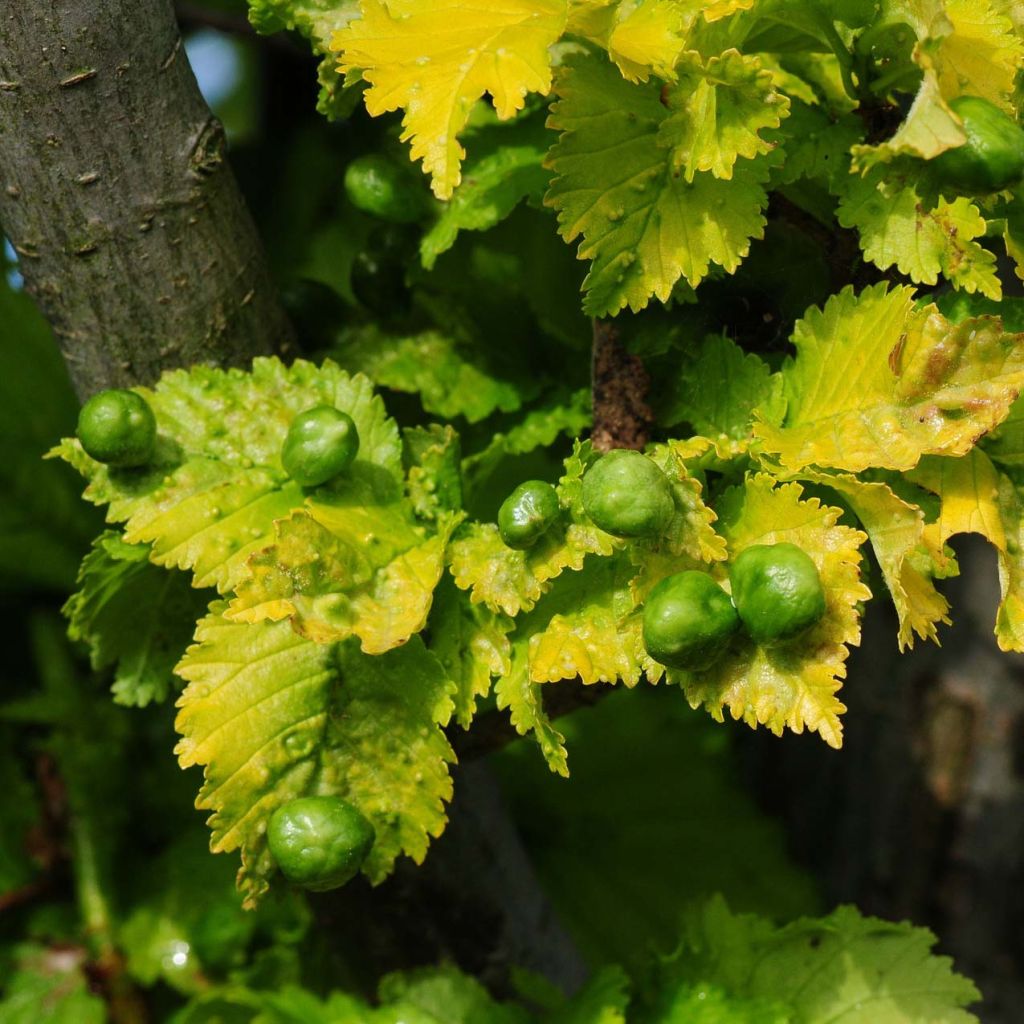

Ulmus x hollandica Wredei - Elm
Ulmus x hollandica Wredei - Elm
Ulmus x hollandica Wredei
Dutch Elm, Holland Elm
This plant carries a 24 months recovery warranty
More information
We guarantee the quality of our plants for a full growing cycle, and will replace at our expense any plant that fails to recover under normal climatic and planting conditions.
From €5.90 for pickup delivery and €6.90 for home delivery
Express home delivery from €8.90.
Delivery to Corse prohibited: UE law prohibits the import of this plant from mainland France to Corse as part of the fight against Xylella fastidiosa. Please accept our sincere apologies.
More information

Does this plant fit my garden?
Set up your Plantfit profile →
Description
Ulmus x hollandica 'Wredei' is a stunning variety of elm tree that will become a centrepiece in any garden, even in limited space. Covered with small undulate golden leaves that play with the spring and autumn sun, this small tree slowly forms a wide upright column with an extraordinary luminosity in the background of a border or in partially shaded areas. Solar, elegant, it thrives effortlessly away from the scorching sun, in ordinary but cool and deep soil.
Ulmus x hollandica brings together several clones mainly derived from the cross-breeding between Ulmus glabra, the European mountain elm, and U. minor, the field elm once widely spread in our countryside before the devastation of Dutch elm disease. 'Wredei' was born from a sport of 'Dampieri'. Selected in Germany in 1877, it is characterized by moderate growth, a narrowly pyramidal to broadly columnar habit, and foliage that maintains a beautiful yellow colour throughout the growing season.
This is a large deciduous bush or small hardy tree, slow-growing, reaching an average height of 9.50m (31ft 2in) with a 2m (6ft 7in) spread, depending on the growing conditions. Tightly clustered on the branches, its small leaves, measuring 8 to 10cm (3.1 to 3.9in) in length, are wavy, rough, oval-shaped, ending in a point, with a doubly toothed margin. They transition from golden yellow in spring to yellow-green in summer before turning yellow-orange in autumn. Ulmus 'Wredei' produces discreet flowering in March-April, before the leaves appear: it consists of clusters of small reddish flowers that develop on two-year-old branches. The flowers are followed by winged fruits called samaras, which are quite decorative with a light red colour.
Ulmus 'Wredei' clearly deserves a prime spot in the garden, but its dazzling foliage shies away from hot or windy exposures and dry soils. It has its place as a standalone in a modest-sized garden, placed in the center of a bed of low or creeping shrubs (Cotoneaster, spindle trees, creeping junipers), or in the background, in a gently sunny area of the garden. It can also be planted in groups of three specimens to mark a pathway or entrance. In a contemporary setting, it can be paired with purple foliage such as that of the purple hazel or the common hornbeam 'Purpurea'. A more informal and rustic decor will welcome it among the vibrant autumn colours of small maples, deciduous viburnums, hornbean 'Orange Retz', and Persian ironwood.
Report an error about the product description
Ulmus x hollandica Wredei - Elm in pictures
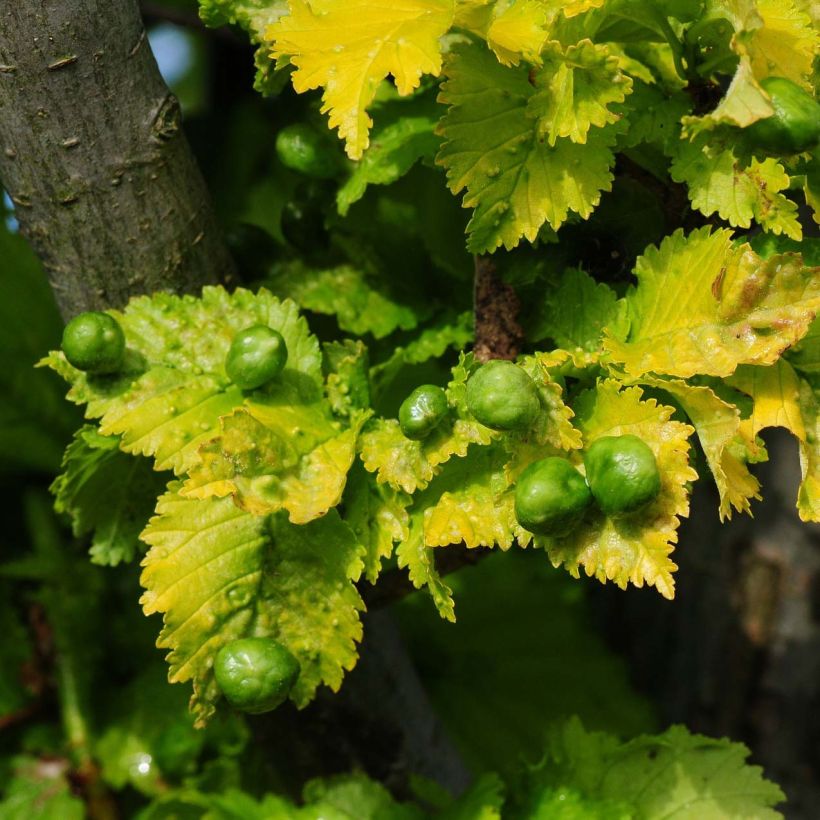

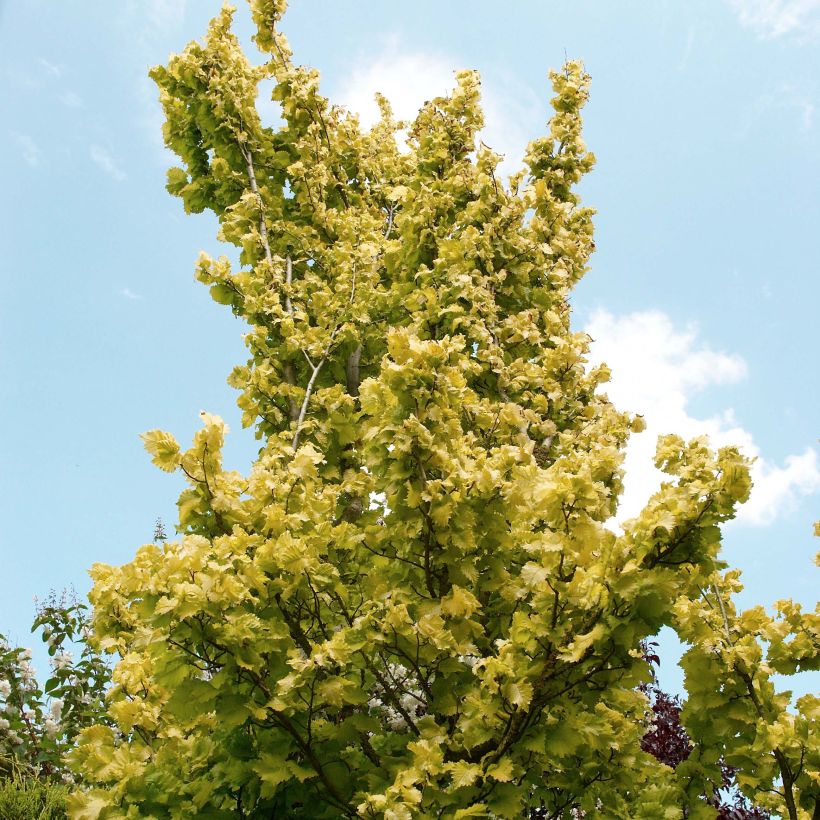

Plant habit
Flowering
Foliage
Botanical data
Ulmus
x hollandica
Wredei
Ulmaceae
Dutch Elm, Holland Elm
Cultivar or hybrid
Other Ulmus - Elm
Planting and care
Ulmus x hollandica 'Wredei' is preferably planted in autumn in a cool, humus-bearing, deep, well-drained, fertile soil, in a sunny or semi-shaded position, without direct sunlight. This tree fears excessively dry and chalky soils, but generally tolerates a balanced and well-enriched ordinary soil with leaf compost. It appreciates temperate climates. Water and mulch during the first summers. Prune in winter to balance its branches. In the 70s, an epidemic of Dutch elm disease greatly reduced the population of elms in Europe. Following this event, a monitoring program was established. The disease is caused by a fungus called Dutch elm disease (a cryptogamic disease caused by a fungus) that is transmitted by an insect called bark beetles. The first symptoms appear on a branch of the canopy and are characterized by wilting and curling of the leaves during the growing season. In general, bark beetles infest large specimens exceeding 2m (6ft 7in) in height. Only biological solutions remain effective, such as pheromone traps or the introduction of bark beetle predators.
Planting period
Intended location
Care
-
, onOrder confirmed
Reply from on Promesse de fleurs
Striking foliage shrubs
Haven't found what you were looking for?
Hardiness is the lowest winter temperature a plant can endure without suffering serious damage or even dying. However, hardiness is affected by location (a sheltered area, such as a patio), protection (winter cover) and soil type (hardiness is improved by well-drained soil).

Photo Sharing Terms & Conditions
In order to encourage gardeners to interact and share their experiences, Promesse de fleurs offers various media enabling content to be uploaded onto its Site - in particular via the ‘Photo sharing’ module.
The User agrees to refrain from:
- Posting any content that is illegal, prejudicial, insulting, racist, inciteful to hatred, revisionist, contrary to public decency, that infringes on privacy or on the privacy rights of third parties, in particular the publicity rights of persons and goods, intellectual property rights, or the right to privacy.
- Submitting content on behalf of a third party;
- Impersonate the identity of a third party and/or publish any personal information about a third party;
In general, the User undertakes to refrain from any unethical behaviour.
All Content (in particular text, comments, files, images, photos, videos, creative works, etc.), which may be subject to property or intellectual property rights, image or other private rights, shall remain the property of the User, subject to the limited rights granted by the terms of the licence granted by Promesse de fleurs as stated below. Users are at liberty to publish or not to publish such Content on the Site, notably via the ‘Photo Sharing’ facility, and accept that this Content shall be made public and freely accessible, notably on the Internet.
Users further acknowledge, undertake to have ,and guarantee that they hold all necessary rights and permissions to publish such material on the Site, in particular with regard to the legislation in force pertaining to any privacy, property, intellectual property, image, or contractual rights, or rights of any other nature. By publishing such Content on the Site, Users acknowledge accepting full liability as publishers of the Content within the meaning of the law, and grant Promesse de fleurs, free of charge, an inclusive, worldwide licence for the said Content for the entire duration of its publication, including all reproduction, representation, up/downloading, displaying, performing, transmission, and storage rights.
Users also grant permission for their name to be linked to the Content and accept that this link may not always be made available.
By engaging in posting material, Users consent to their Content becoming automatically accessible on the Internet, in particular on other sites and/or blogs and/or web pages of the Promesse de fleurs site, including in particular social pages and the Promesse de fleurs catalogue.
Users may secure the removal of entrusted content free of charge by issuing a simple request via our contact form.
The flowering period indicated on our website applies to countries and regions located in USDA zone 8 (France, the United Kingdom, Ireland, the Netherlands, etc.)
It will vary according to where you live:
- In zones 9 to 10 (Italy, Spain, Greece, etc.), flowering will occur about 2 to 4 weeks earlier.
- In zones 6 to 7 (Germany, Poland, Slovenia, and lower mountainous regions), flowering will be delayed by 2 to 3 weeks.
- In zone 5 (Central Europe, Scandinavia), blooming will be delayed by 3 to 5 weeks.
In temperate climates, pruning of spring-flowering shrubs (forsythia, spireas, etc.) should be done just after flowering.
Pruning of summer-flowering shrubs (Indian Lilac, Perovskia, etc.) can be done in winter or spring.
In cold regions as well as with frost-sensitive plants, avoid pruning too early when severe frosts may still occur.
The planting period indicated on our website applies to countries and regions located in USDA zone 8 (France, United Kingdom, Ireland, Netherlands).
It will vary according to where you live:
- In Mediterranean zones (Marseille, Madrid, Milan, etc.), autumn and winter are the best planting periods.
- In continental zones (Strasbourg, Munich, Vienna, etc.), delay planting by 2 to 3 weeks in spring and bring it forward by 2 to 4 weeks in autumn.
- In mountainous regions (the Alps, Pyrenees, Carpathians, etc.), it is best to plant in late spring (May-June) or late summer (August-September).
The harvesting period indicated on our website applies to countries and regions in USDA zone 8 (France, England, Ireland, the Netherlands).
In colder areas (Scandinavia, Poland, Austria...) fruit and vegetable harvests are likely to be delayed by 3-4 weeks.
In warmer areas (Italy, Spain, Greece, etc.), harvesting will probably take place earlier, depending on weather conditions.
The sowing periods indicated on our website apply to countries and regions within USDA Zone 8 (France, UK, Ireland, Netherlands).
In colder areas (Scandinavia, Poland, Austria...), delay any outdoor sowing by 3-4 weeks, or sow under glass.
In warmer climes (Italy, Spain, Greece, etc.), bring outdoor sowing forward by a few weeks.

































